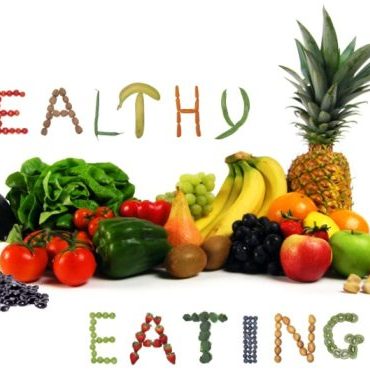 Questions and Answers on the weight issue that everyone can benefit from.
Questions and Answers on the weight issue that everyone can benefit from.
What has more of an influence on obesity, nature or nurture?
In a study that included more than 5,000 identical and non-identical twin pairs, researchers found heredity to be a much bigger predictor of childhood obesity than lifestyle. They concluded that three-quarters of a child’s risk for becoming overweight is due to genetic influences, while just under a quarter of risk can be attributed to environment. Researcher Susan Carnell, PhD, says the fact that genes play such an important role in a child’s weight was somewhat surprising.
The obesity rate among children in the U.S. has more than doubled for preschoolers and teens over the past three decades and more than tripled for children between the ages of 6 and 11. Similar increases have been seen across the globe, including in the U.K., where the twin study was conducted. Carnell and colleagues studied twins in an effort to quantify the impact of genetic and environmental influences.
“Twin studies provide a unique method for disentangling nature and nurture by taking advantage of the fact that (identical) twins share all of their genes, whereas (fraternal) twins on average share half of their segregating genes,” they wrote.
A total of 5,092 identical and non-identical twin pairs who were enrolled in the larger ongoing trial took part in the study; the participants were born between 1994 and 1996. Researchers measured each child’s body mass index (BMI) and waist circumference and then compared the findings between the identical and non-identical twins. Using a standardized genetic modelling analysis, the researchers concluded that the differences in the children’s BMI and waist circumferences were 77% attributable to genes.
One must not conclude that bad Genes make obesity inevitable!
The findings do not mean that becoming overweight or obese is inevitable for children who are genetically susceptible, but it does mean that these children may need some extra support. It may be that genes influence behaviour through appetite or by making it harder for some people to resist food. So while one child might be perfectly OK living in a home filled with chips and cakes, another might find it very challenging. Diet, lifestyle, and other environmental influences play a major role in obesity, especially for genetically predisposed children. This type of genetic predisposition could not be expressed if there wasn’t so much food around. We would all be skinny. It is our environment that is allowing our genetic susceptibility to express itself. It would benefit everyone if we did more as a society to encourage activity and healthy eating, but it would be especially beneficial for children who are highly susceptible to their environment.
 Just a question about my weight. I am 50 and need a boost to help shift it. I walk 5ks every second day so I am OK there. I work every day so it is getting a bit hard. I am open to suggestions.
Just a question about my weight. I am 50 and need a boost to help shift it. I walk 5ks every second day so I am OK there. I work every day so it is getting a bit hard. I am open to suggestions.
As we get older our metabolism slows down and it gets increasingly more difficult to lose weight. The only way to shift it is to increase your activity level and reduce portion sizes. Try and do a walk at lunch times on the days you are not doing the 5km walk. Short bursts of activity all help to speed up your metabolic rate – 10 minutes is better than nothing, especially if you are in a sedentary job. Eat very light dinners so that you don’t go to bed on a full stomach.
Breast cancer runs in my family. Are there any foods that I should be eating or avoiding?
The diet and lifestyle advice for a woman with a family history of breast cancer is the same as the guidelines for anyone who wants to reduce risk. In short, these recommendations are as follows: maintain a healthy weight, stay physically active, quit smoking, eat lots of plant-based foods, limit red meat, avoid processed meat, and cut back on alcohol and salt. A 2014 US study concluded that adopting many of these broad cancer-prevention guidelines can cut the risk of breast cancer by a third. If a woman meets just one of these guidelines, her breast-cancer risk will drop by approximately 5%, according to experts, and this risk keeps falling for every extra guidelines she meets. The smartest minds in the fields have developed cancer-prevention guidelines from the best available research. As a result, the best thing anyone can do to reduce their cancer risk, whether they have a family history of cancer or not, is to heed this advice, which will have a positive influence on their life.
I am overweight for my age. I am 13 and 153 cm tall. I weigh 65kg. Can you help me with an affordable diet plan? I hate fish, spinach and pumpkin, so please help!!! People also call me chunky and I don’t have many friends.
Your weight is obviously affecting every part of your life, including your self-esteem, so you must do something about it. You have to alter your lifestyle – both eating and exercise. Why don’t you follow the eating plan in NW magazine and you will see your weight drop consistently. In addition, I have asked you to walk every day for 45 minutes. Walking costs nothing and eating sensibly is no more expensive than eating a high fat diet. Losing weight is a simple equation of energy balance – if you reduce your intake and increase your activity level your weight will fall off incidentally to you eating properly. Stop focusing on your weight and concentrate more on changing lifestyle habits – you will be thrilled with the results!!!
Do you have a weight loss program for type 2 diabetes?
Most Type 2 Diabetics can control their blood sugar levels with exercise and diet. The program I have outlined on my website (www.arlenesway.com.au) is perfect for you to follow – both the exercise and the food intake. However, if you are on insulin you should consult a dietitian to be prescribed a more individual eating plan.
 It seems like a growing number of foods contain artificial sweeteners. Are these safe alternatives to sugar?
It seems like a growing number of foods contain artificial sweeteners. Are these safe alternatives to sugar?
Ever since our first brush with artificial sweeteners (which was decades ago for many of us), some of us have been questioning whether a zero-kilojoule sugar substitute is simply too good to be true. Fortunately the government body guarantees the safety of all our food. Before any edible ingredient or product reaches the stores it has undergone stringent testing. Naturally sourced sweeteners are now challenging artificially produced aspartames and saccharins for marketplace dominance. The first sweetener made of a plant other than sugar cane was stevia, an extract from the Stevia rebaudiana plant. A more recent arrival on the sugar-substitute scene is Norbu, which is made of monk fruit (luo han guo), an Asian melon. You will now find both of these products sweetening foods such as low kilojoule soft drinks and iced teas, chocolate and yoghurt. In some cases, manufacturers mix them with sugar to create foods that taste as sweet as their original versions, but contain fewer kilojoules. You can buy these new sweeteners in crystal form, which looks like table sugar, for baking or adding to tea or coffee. To create these granulated products, manufacturers blend these natural sweeteners with erythritol, a natural low-kilojoule sugar alcohol.
I have recently had my appendix out and have lost about 25 kilos. I now weigh 47 kilos. Is this a good weight considering I am 15 years of age? I try to eat rather good food and never eat junk food.
You have lost a great deal of weight – over what time period? I cannot tell you whether it is an ideal weight without knowing your height. Continue eating a balanced diet of six small meals a day, and exercise regularly. Ensure that your intake is sufficient and that you don’t continue to drop weight so drastically. I suggest you consult your doctor so he can check that you are a healthy weight and satisfying your nutrient requirements.

